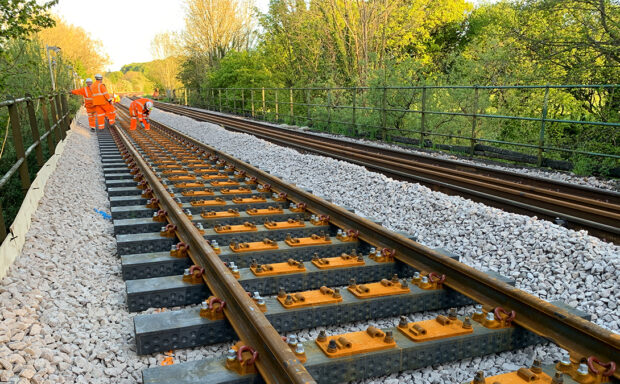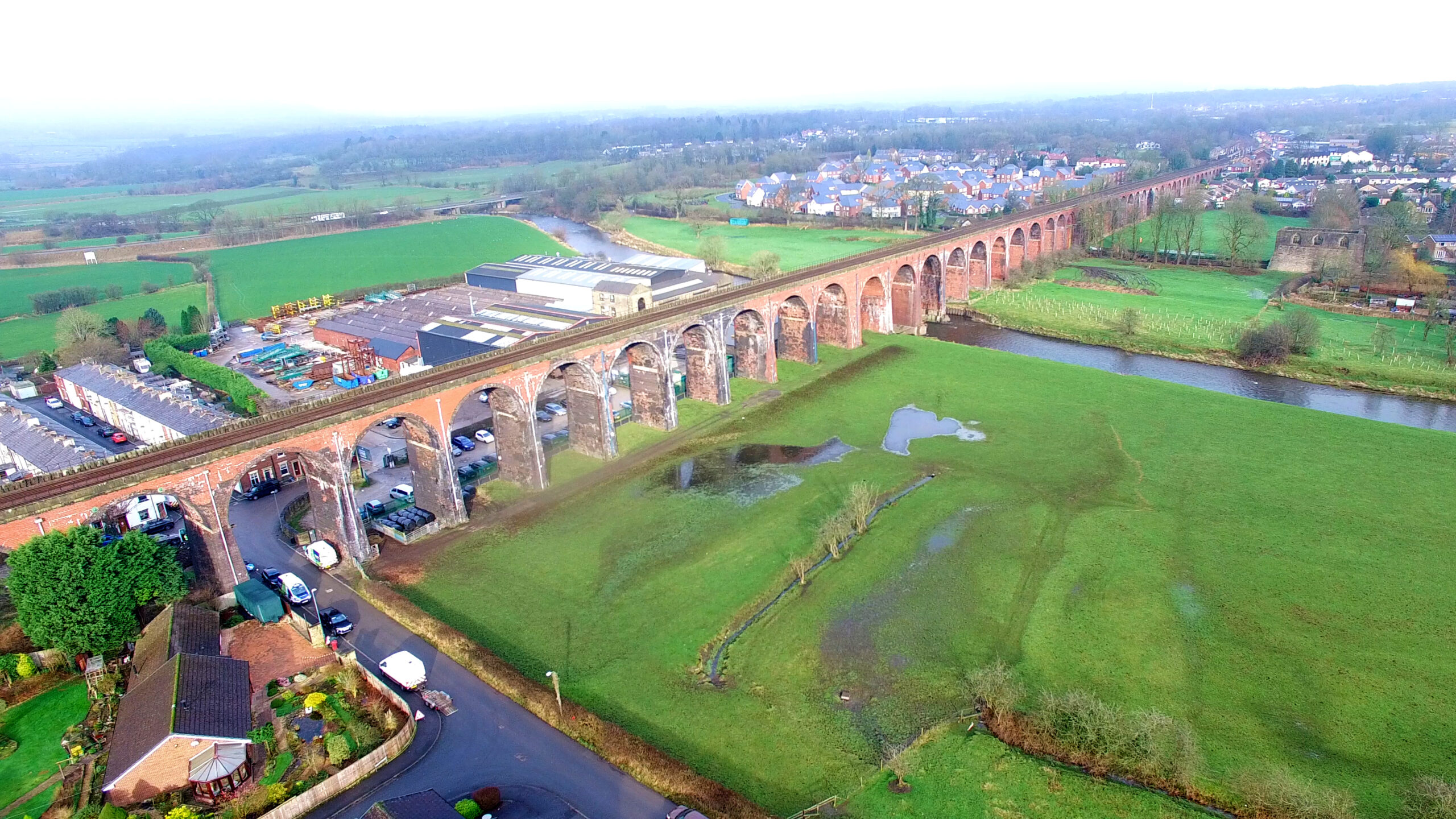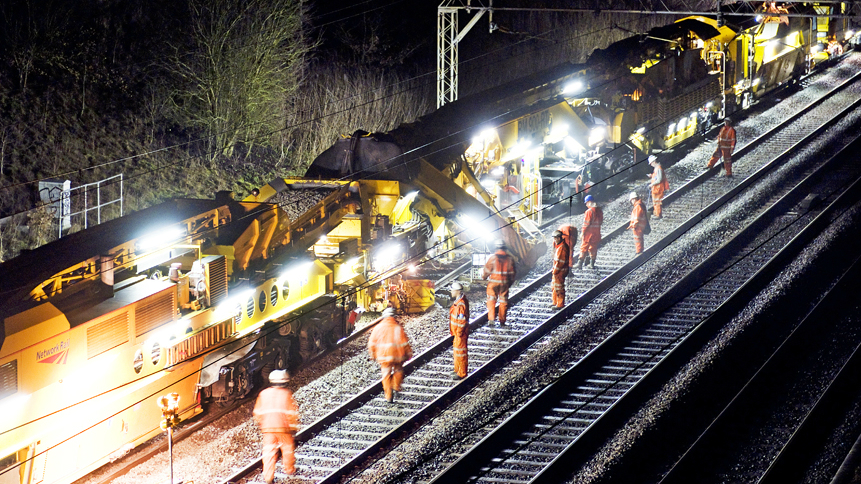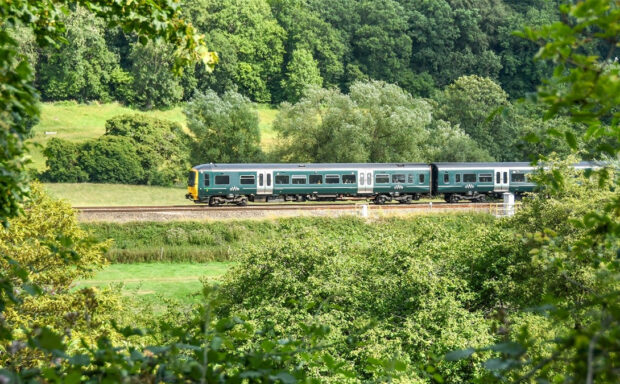The railway has undergone huge changes in response to coronavirus, to keep vital services running for key workers and freight operators and ensure people using the railway and working on it can stay far enough apart from each other.
However, we are doing everything we can to continue our day to day work for everybody in Britain – and that includes carrying out regular maintenance and improvements:
Earthworks in Somerset and Wiltshire
We’re getting ready to carry out important earthworks between Somerset and Wiltshire to help provide more reliable journeys for passengers – and remove two speed restrictions.
A section of railway here will close for nine days from 13 to 21 June to allow us to secure a railway embankment.
Engineers will remove thousands of tonnes of material after a landslip in December at Templecombe in Somerset that occurred following continued rainfall.
They will also strengthen the cutting with stone and build a new retaining wall at the bottom of the slope to further protect the line from soil movement.
Further strengthening works to other areas of the cutting at Templecombe will take place between the end of June and September.
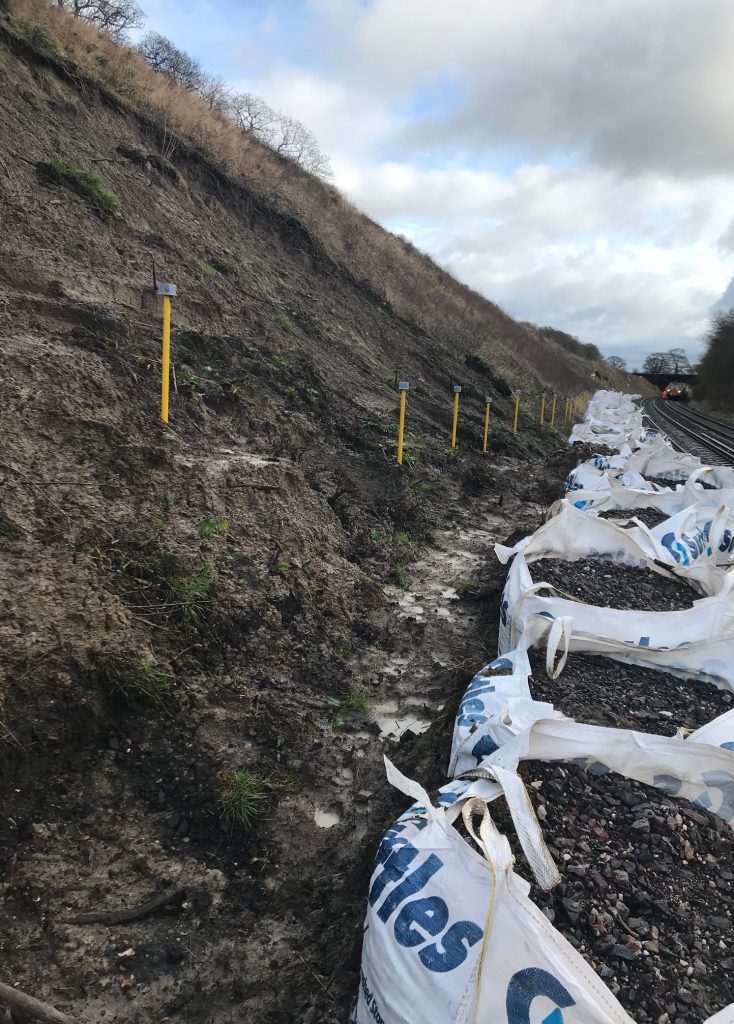
Hot weather prep at London Euston
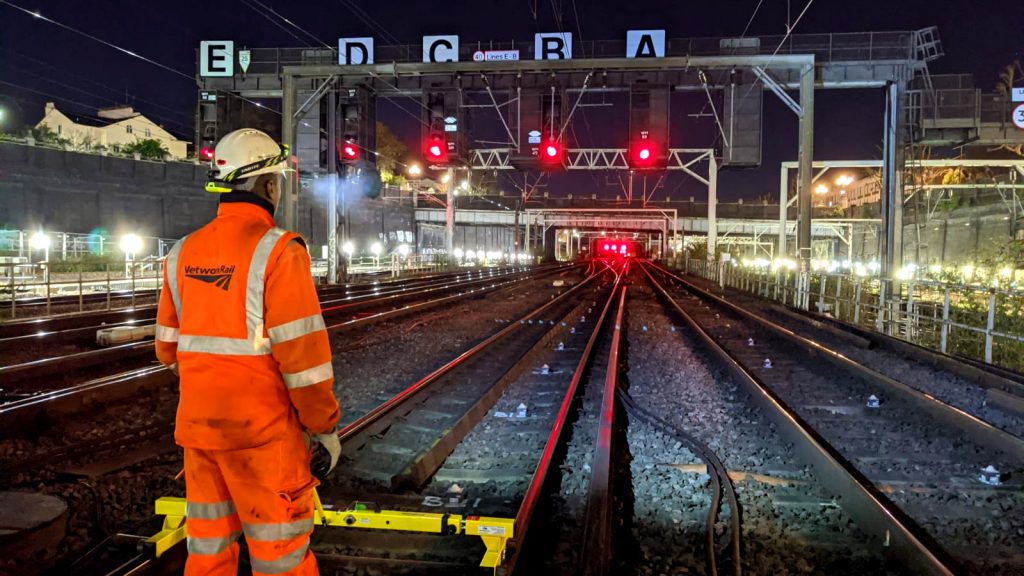
We’re overhauling the overhead line equipment on the approach to London Euston station to help prevent the wires from sagging in very hot weather.
The installation of 2,000 metres of new cable, renewal of essential overhead line equipment and use of special on-track machines will ensure the right tension for the wires.
Overnight work to renew and replace the 25,000 volts cables which power trains will take place in Camden over a four-week period.
During extremely hot weather, overhead wires can sag. The wires can then catch on passing trains and be torn down.
When this happens, the line must be closed for repairs, trains can become stranded and passengers are disrupted.
Embankment works near Manningtree for fewer delays
We’ve completed work on the Norwich and London mainline near Manningtree to reinforce the embankment and protect the tracks by preventing vegetation and debris falling onto the line. This will help keep the line clear and trains running safely for those who need to travel by train.
Over time, the embankment eroded and became unstable, which posed a risk to passing trains. Trees and debris could have fallen onto the tracks below, causing damage to the overhead wires and trains, which is a safety risk and ultimately leads to delays and cancellations. Our contractor, Taziker Industrial, installed netting across the embankment which will prevent this from happening and keep services running safely.
Vegetation and drainage works also took place and new fencing was installed to help keep the embankment safe from future erosion:
Better journeys after longest tunnel closure since Victorian-era
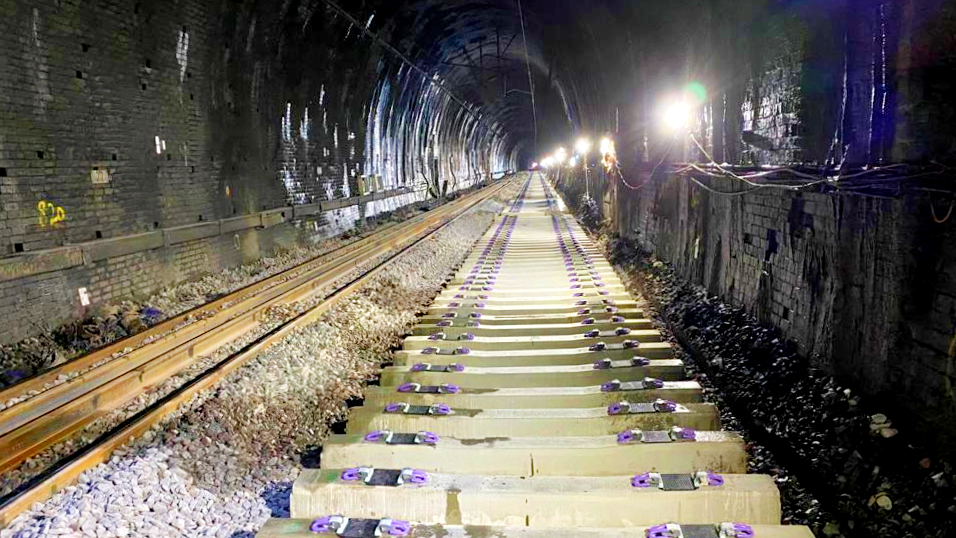
Two weeks’ work on a Victorian-built railway tunnel have completed, improving future journey times for passengers and freight on the West Coast Main Line.
Kilsby Tunnel near Daventry reopened on 18 May after major upgrades to drainage and track on a vital section of one of Europe’s busiest mixed-use passenger and freight railway lines.
It’s thought to be the longest full closure of the tunnel since it opened in 1837.
Because of its age, water leaking through the 183-year-old tunnel’s walls had caused the track to flood and degrade. This meant we had to impose speed restrictions, causing delays for passengers travelling between London Euston and the Midlands.
Bedfordshire bridge upgrade
Bromham Road bridge in Bedfordshire is now open for pedestrians and cyclists, which will help to maintain social distancing.
We’ve opened the footpath on the south side of the bridge for pedestrians, as well as temporarily opening half of one carriageway to cyclists. This means people can access the new bridge when they’re out exercising, whilst following government guidelines and staying at least two metres apart.
Bromham Road closed in June last year but pedestrians and dismounted cyclists have been able to use a temporary footbridge, which we’re removing.
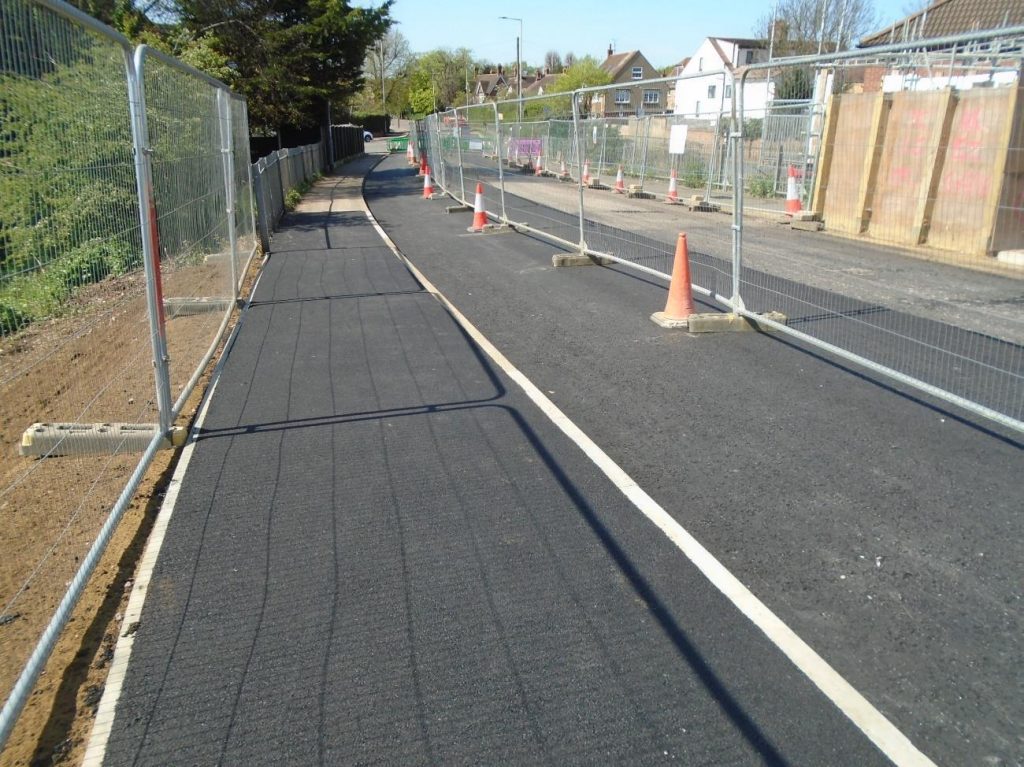
When the government imposed its social distancing measures, the road closure was extended until the summer, which has allowed part of the road to safely open for cyclists throughout our upgrade work.
Protecting Purfleet’s tracks
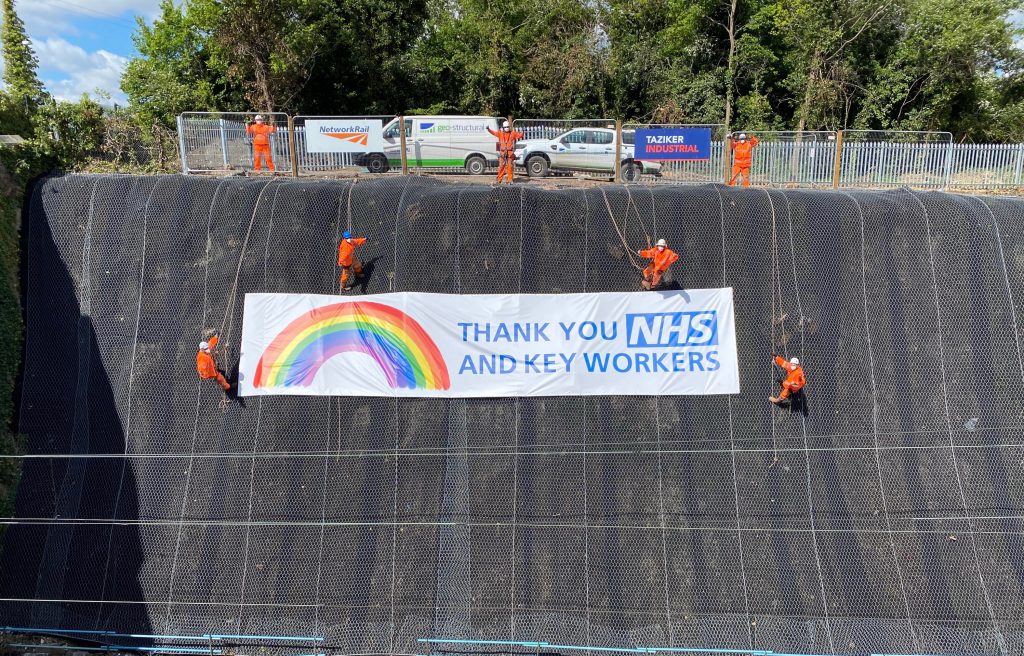
We’re carrying out essential works at Purfleet on the London to Grays (Tilbury Loop) rail line to reinforce the embankment and protect the tracks. Preventing vegetation and debris from falling onto the line will will help keep the railway clear for those who need to travel by train.
Over time, the embankment at Purfleet has eroded and become unstable, which poses a risk to the tracks and passing trains. Trees and debris could fall on to the tracks below, causing damage to the overhead wires and passing trains, which ultimately leads to delays and cancellations. Network Rail’s contractor, Taziker Industrial, has installed a netting which will prevent this from happening.
Storm-damaged Cumbrian Coast line set to reopen in a month
Repairs will soon complete on a section of the Cumbrian Coast line left badly damaged by three consecutive storms.
High tides, strong winds and heavy rain brought by storms Ciara, Dennis and Jorge caused structural damage to a bridge carrying the railway at Parton.
Both lines have been closed since March so the bridge could be completely replaced to make the railway safe and reliable again.
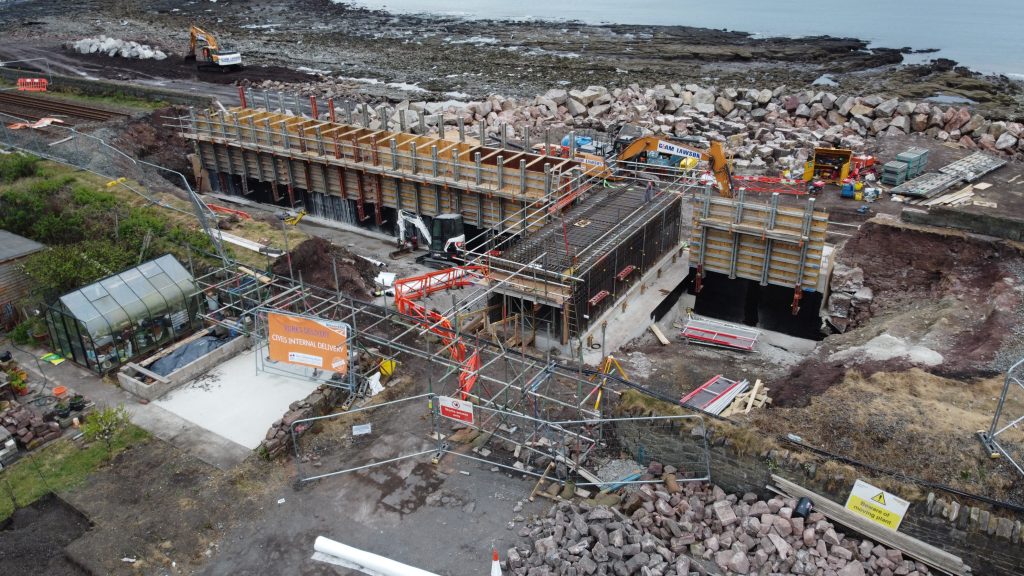
Phil James, route director for Network Rail’s North West route, said: “Repairs at Parton are progressing well, and I look forward to the whole of the Cumbrian Coast line – a key passenger and freight route being open to services once more.
“I’m especially impressed that our teams have been able to undertake all of this work while following social distancing guidelines introduced by government. It demonstrates just how well we can work together, even in such testing times.”
Read more:
East West Rail project reaches milestone
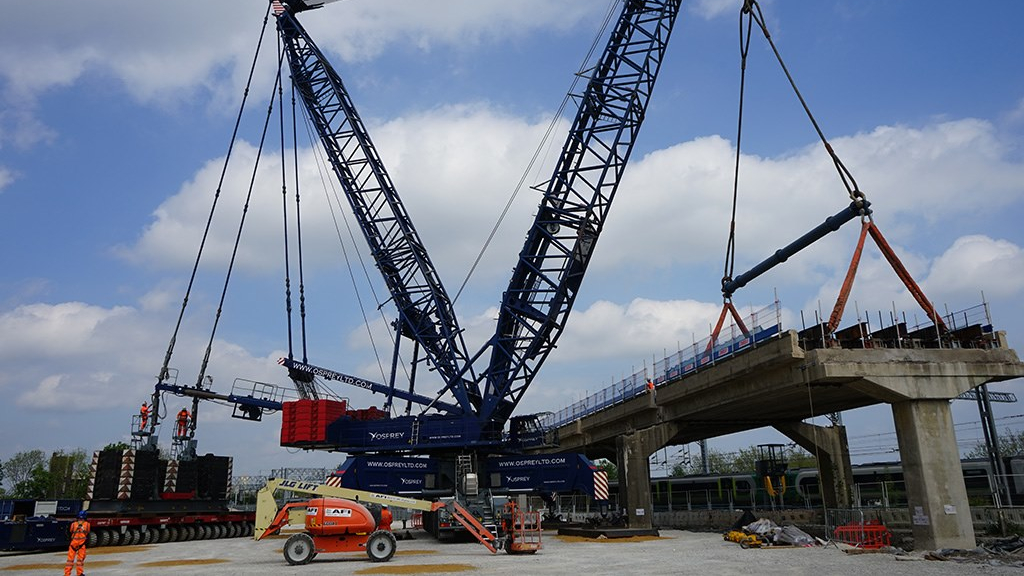
We hit a milestone on the major East West Rail project when we removed huge sections of the 1960s concrete railway flyover in Bletchley, Buckinghamshire.
We will rebuild the flyover to modern standards as we re-establish a rail link between Oxford and Cambridge.
Tim Shoveller, managing director for Network Rail’s North West and Central region, said: “This is a major milestone for East West Rail – a new railway which will transform connectivity and journey times across the heart of the country. It promises to provide a greener, low carbon transport system which will bring huge benefits to passengers and businesses – driving economic growth and creating opportunities for housing and new jobs.”
Safer station for Oxfordshire after level crossing closes
A level crossing in Tackley, Oxfordshire, has closed and been replaced by footbridge as we continue to make the railway safer.
The crossing, near to Tackley station, closed today 28 April and has been replaced by a footbridge.
It follows repeated misuse of the level crossing with 15 incidents reported in the last 18 months.
The footbridge is a temporary structure as Network Rail continues to develop plans to create a subway which would also be wheelchair accessible. It is expected these plans will be shared with the community later this year.
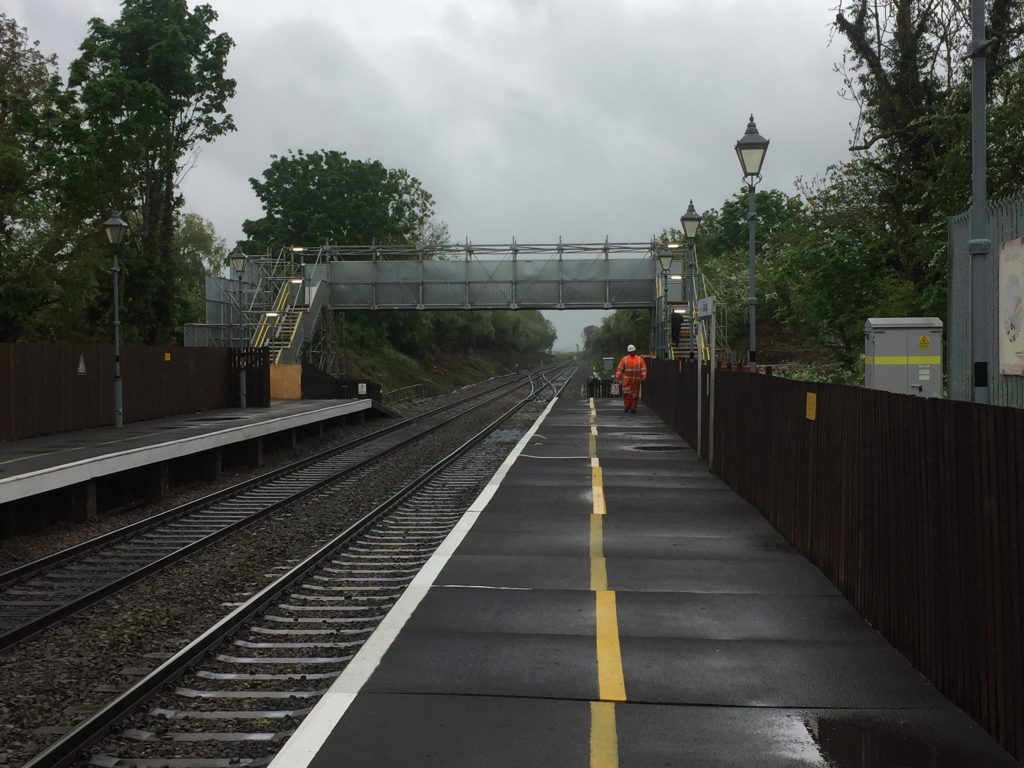
Bridge in Oxfordshire to stay in place after state-of-the-art testing
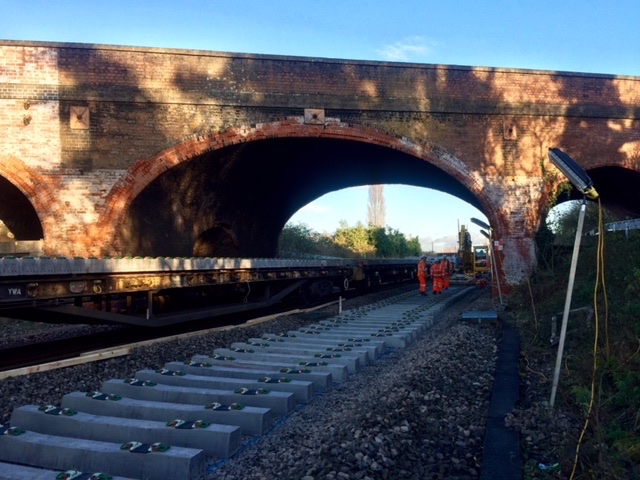
A Grade II listed bridge in Steventon, Oxfordshire, has been saved after innovative testing and the introduction of a new speed limit by Network Rail means it no longer has to be replaced as part of electrification.
We had planned to demolish the bridge over the Great Western Main Line and replace it with a higher bridge to allow overhead wires, which power electric trains, to pass underneath.
However, following feedback from the community about how this would impact the village, we carried out state-of-the-art testing to see if the bridge could be saved.
This extensive and breakthrough testing, which included the use of computer-based simulation software, found that if the line speed of the railway was reduced to 110mph through Steventon, the wires could pass underneath the existing bridge. This is the safest maximum speed that the overhead electric wires can be used continuously for the everyday running of the railway because the electric wires need to dip under the bridge and rise again the other side.
Major improvements for Buxton area
Major work is taking place to protect the railway from landslips in the picturesque Derbyshire Peak District. We’re upgrading the railway embankment to improve future journeys on the line between Manchester and Buxton as part of the Great North Rail Project. The earth embankments will be less steep and the ground more secure in two locations near Chapel-en-le-Frith.
Network Rail has kept the railway open while carrying out the work to minimise disruption to essential passenger and freight services on the route.
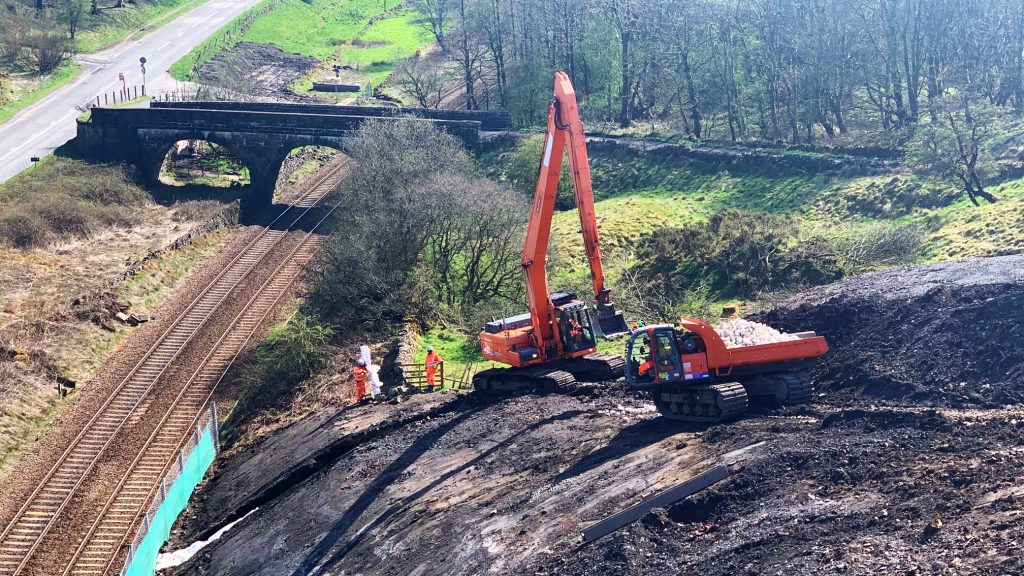
New track for Billericay
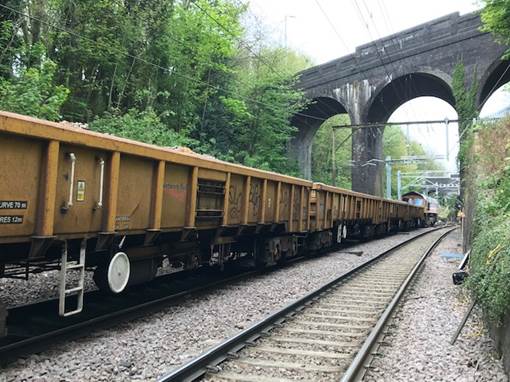
We installed new track, sleepers and ballast at Billericay on the Southend Victoria branch line, which means fewer delays for key workers currently using the line and improved reliability in the long term ready for when passengers return.
Over the weekend of 18 to 19 April, our engineers replaced more than 300 metres of rails, sleepers and ballast at Billericay.
Over time track, becomes worn from constant use, especially on busy lines, and needs to be replaced to keep services on the move and reduce the likelihood of faults that causes delays. The work was planned for when the line was already closed for the replacement of the overhead wires to reduce the number of closures.
Track renewals complete at Maryland
Key workers can now get to work on a more reliable and resilient railway thanks to renewed track and points at Maryland. This means fewer delays and increased reliability on the busy Norwich to London line for years to come.
Our engineers renewed four crossovers, which allow trains to change from one track to another, over the course of eight weekends. Crossovers are crucial in reducing delays when there are issues on one of the tracks ahead.
This is a busy junction relied upon for moving thousands of passengers and freight services in and out of London Liverpool Street and around the region.
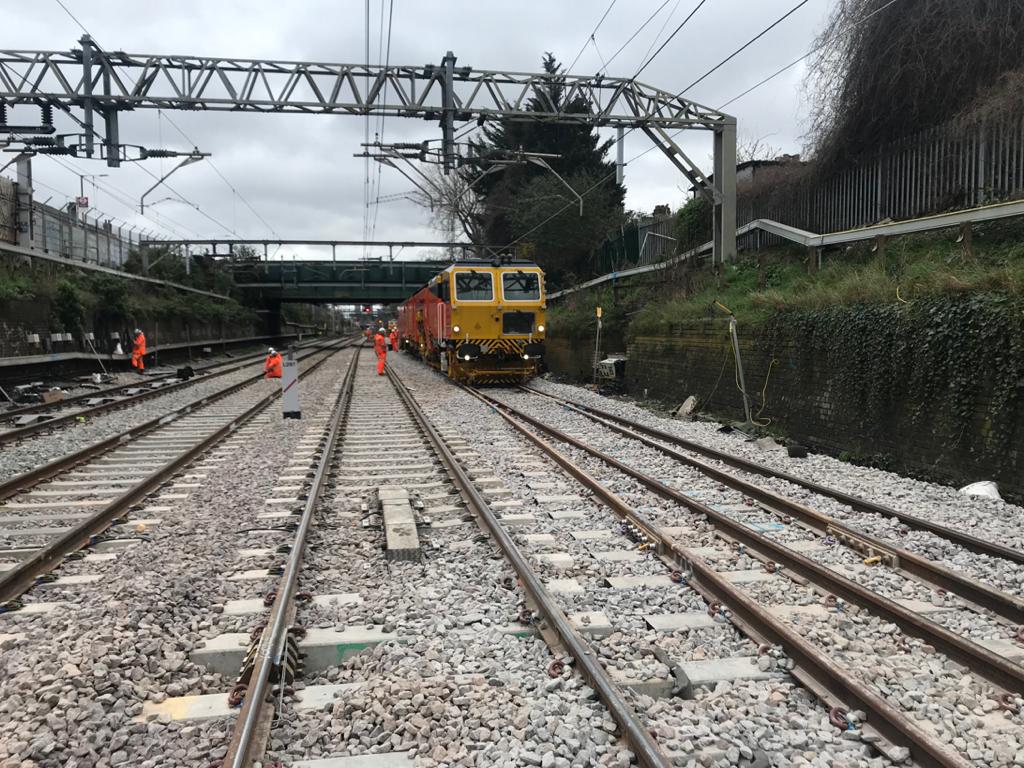
Historic railway footbridge refurbishment complete at New Mills Newtown station
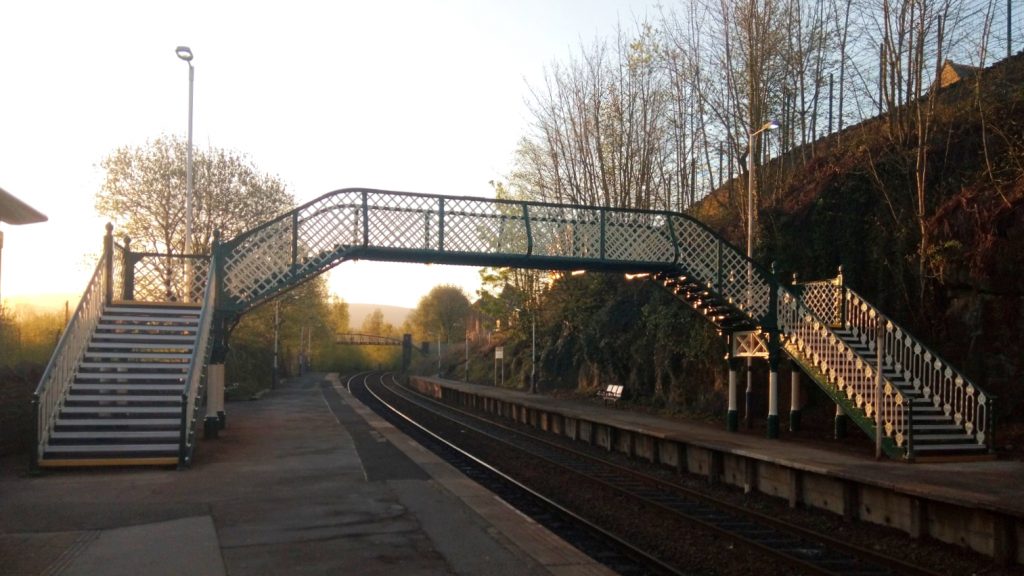
An historic railway footbridge has been fully refurbished for passengers at New Mills Newtown station in the Derbyshire Peak District.
As part of the Great North Rail Project, we strengthened the 157-year-old stairs and bridge, and grit-blasted and fully repainted the steel structure.
The Grade-II listed Victorian footbridge was originally built in 1863, six years after the station opened.
New Mills Newtown is on the route between Manchester and Buxton.
Easter bank holiday works
We recently completed our latest bout of bank holiday engineering works, which included track renewals, improvements to drainage and preparations for one of our biggest upcoming projects – East West Rail.
Meanwhile, we’ve been busy finishing work to reinforce a steep railway embankment to make train journeys between Barrow-in-Furness and Lancaster more reliable.
We invested £500,000 to strengthen the land beside the railway at Holmrock on the Furness Line to the south of the Kent Viaduct. We reinforced the slope strengthened and built a new piled retaining wall to protect the track from future movement.
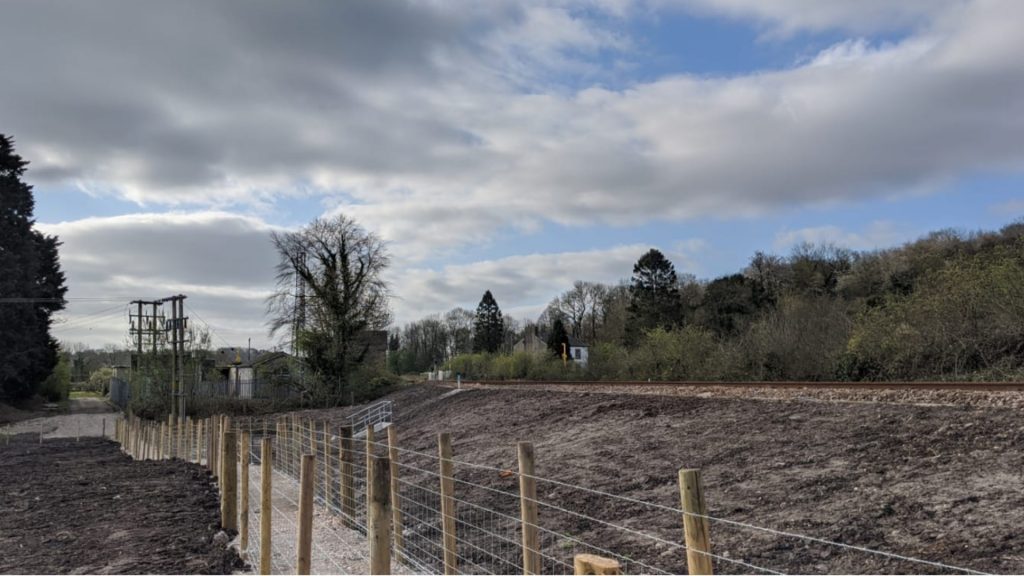
It’s part of The Great North Rail Project to improve rail travel in the North of England.
Tony Butler, route asset manager for earthworks at Network Rail, said: “This vital upgrade as part of the Great North Rail Project will keep important Northern passenger services running safe and reliably on this section of the Furness line.
“The work involved making the embankment shallower and the building of a retaining wall to keep the track in place. The work was all carried out without closing the railway.”
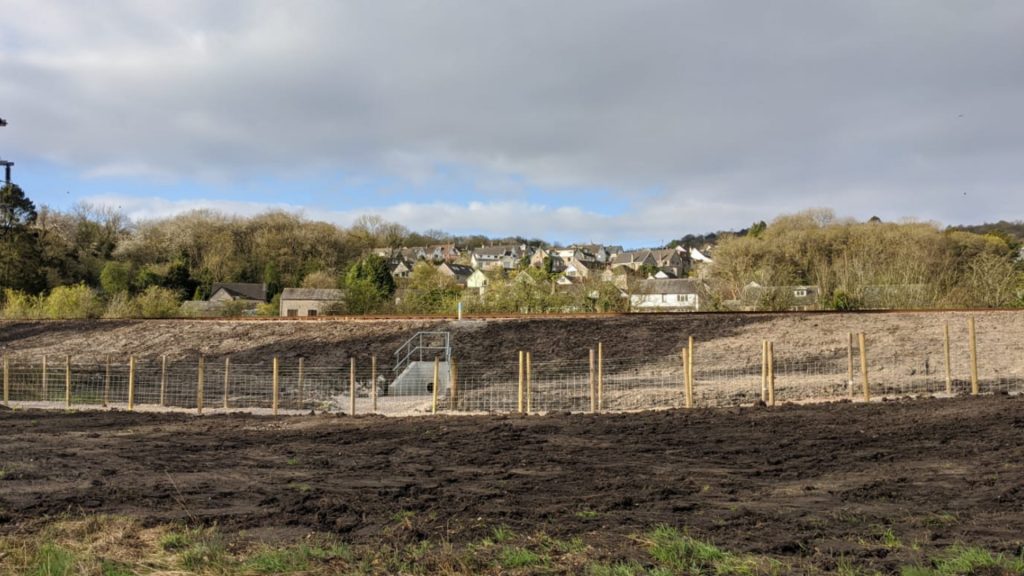
Bridge upgrade for Bedford
In Bedford, Bedfordshire, the extension of a road closure will allow us to complete vital bridge upgrade. Bromham Road will remain closed until the summer to enable the final stage of work to upgrade the railway bridge.
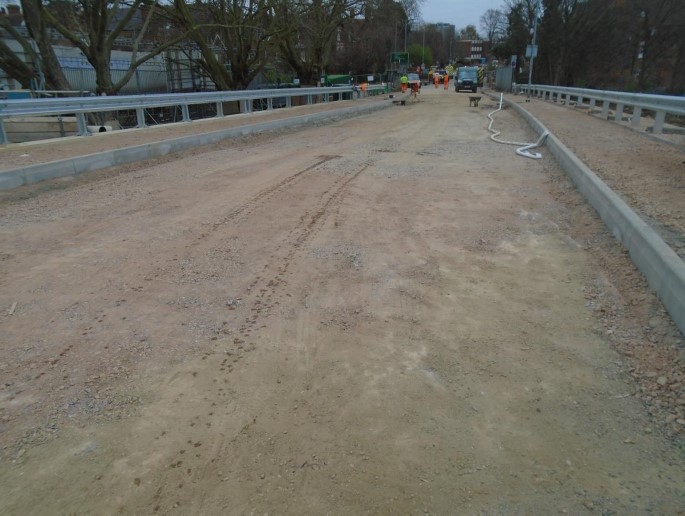
There are fewer motorists on the roads in Bedford, as people continue to follow government advice and avoid non-essential travel, which means the road closure can be extended without being particularly disruptive for the community.
The extended road closure will mean that progress can continue to be made on the bridge upgrade, while reducing the impact on residents in Bedford.
The extension of the road closure also means there is space to ensure workers are at least two metres apart, in line with Public Health England’s guidelines on social distancing. Network Rail is taking all necessary precautions to keep workers safe. Additional measures have been taken such as staggering shift times and breaks, setting up a one-way system in welfare facilities to segregate workers and increasing cleaning regimes.
Our engineers carried out work to demolish Bromham Road bridge in November last year and reconstructed it at a raised height in December. This was to provide a safe distance for the overhead line equipment to pass beneath it, enabling the line between Bedford, Kettering and Corby to be electrified as part of the £1.5bn Midland Main Line Upgrade.
We’re working closely with Bedford Borough Council on the next phase of work to Bromham Road bridge, which involves removing the scaffold bridge on the site and resurfacing the roads and footpaths.
Emergency repairs on the West Coast Main Line
In March, engineers raced to make emergency repairs on the West Coast Main Line to avoid major disruption to freight trains.
Overhead lines, which carry 25,000 volts to power electric trains, came down north of Carlisle at 1.30pm on Tuesday 7 April.
A bird landed on the high voltage cables underneath a bridge at Kingmoor, which caused the section involved to earth.
When this happens the extremely high current passes into the bridge, causing the wires to melt, lose tension, and break away from their supports.
More than a dozen staff completed the repairs in just six hours so overnight freight trains on the important Anglo-Scottish route were not disrupted.
Darren Miller, Network Rail infrastructure and maintenance delivery manager for Lancashire and Cumbria, said: “With the movement of essential goods on the railway like medical supplies, food and energy, it was vital we fixed this problem as fast as we possibly could.
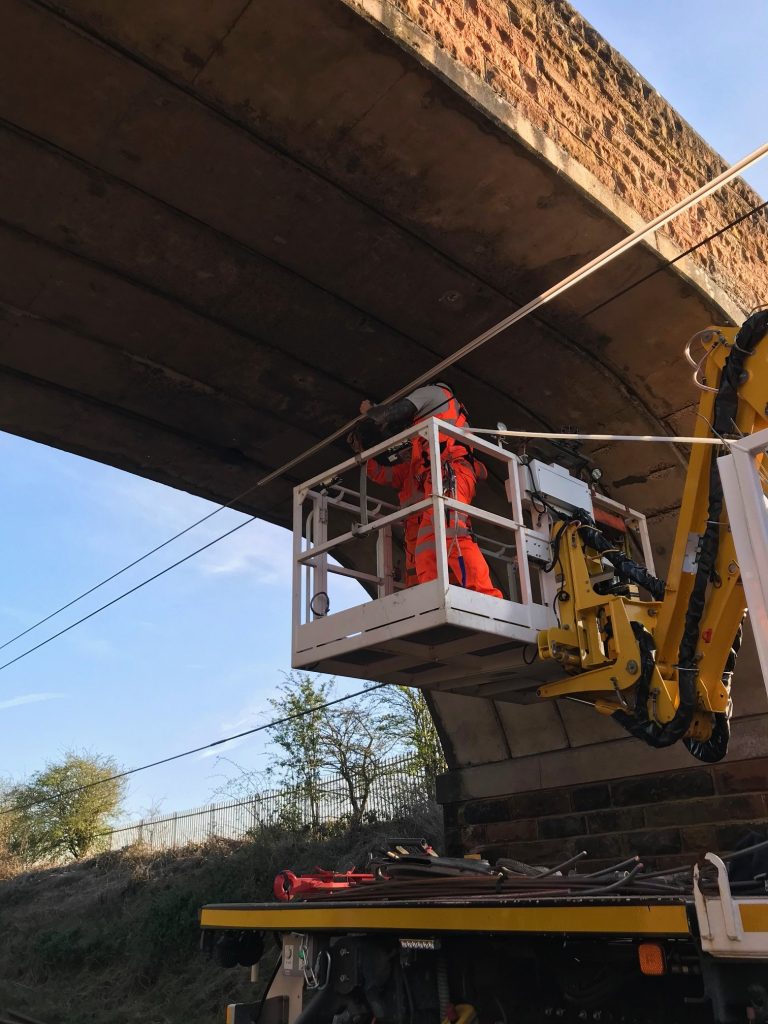
“We’re sorry to any passengers or freight customers effected by the delay while we worked hard to repair the damaged power lines.
“However, our specialist engineers safely completed the repair in time for the night time freight traffic that transports essential food, fuel and medical supplies across the country.
“I’m proud of our key worker railway staff who are continuing with their critical maintenance activities to keep our railways open for freight during this Coronavirus crisis.”
Network Rail engineers fitted secondary isolation on the wires under the bridge, so they do not earth in the same way again and to help protect birds in the future.
Abseil team gets to work in Liverpool
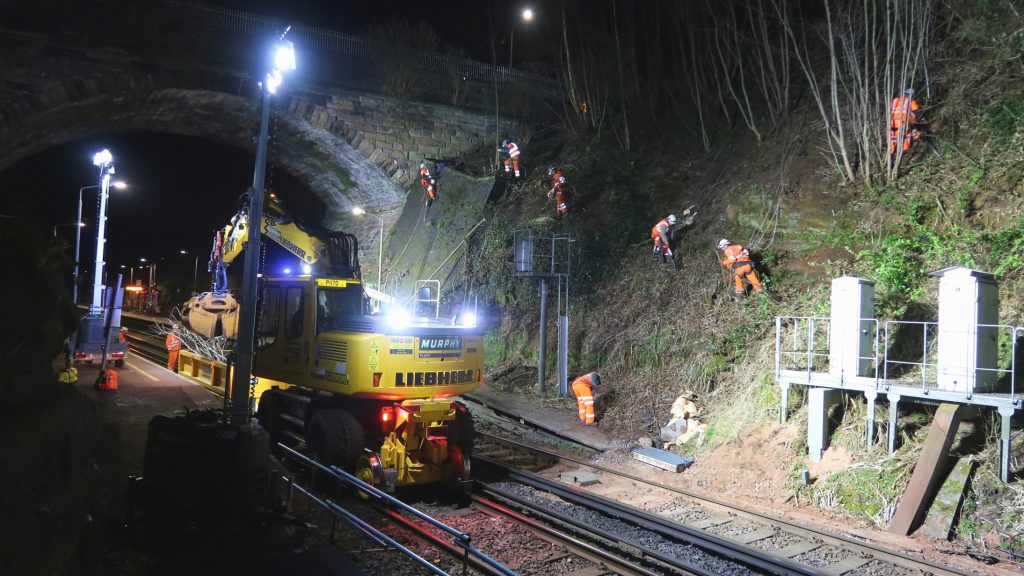
Abseiling teams have been securing a steep railway cutting making it more reliable for passengers on the line between Liverpool and Ormskirk.
Specialist contractors scaled the rock cutting at Aughton Park station in West Lancashire over several weekends in March and April.
The work involved removing loose material, inspecting drainage and monitoring the ground conditions on a slope beside the busy railway line.
Rope access teams and engineers carried out the essential safety work while maintaining a two-metre distance from each other, in line with government guidelines for essential workers during the covid-19 pandemic.
Tony Butler, route asset manager for geotechnics at Network Rail, said: “Our teams are working around the clock to make sure people who cannot work from home can still get to their jobs. This includes NHS staff who use the railway to get to work in hospitals in Liverpool, Aintree and Ormskirk.
“I’m proud of the hard work our staff continue to deliver, even during this incredibly difficult time.”

